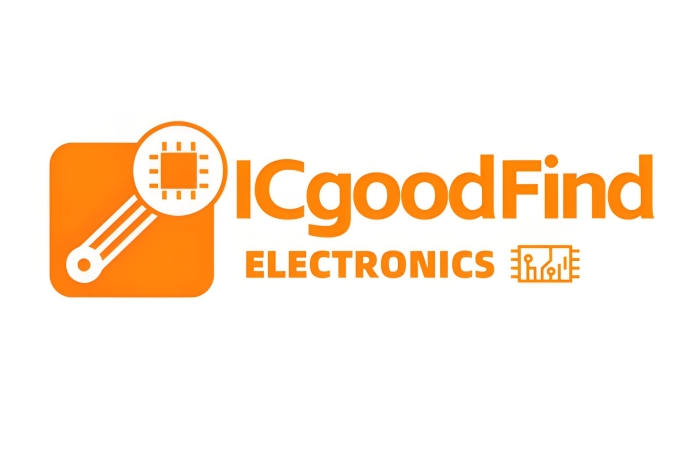**High-Performance Design Considerations for the ADA4938-1 Ultra-Low Distortion ADC Driver**
The pursuit of higher resolution and speed in data acquisition systems places immense demands on the signal chain, particularly the interface between the analog world and the digital domain. The ADC driver, a critical component in this chain, must preserve signal integrity with minimal noise and distortion. The **ADA4938-1** stands out as a premier solution, an ultra-low distortion, differential output amplifier specifically designed to drive high-performance analog-to-digital converters (ADCs). Achieving its specified performance in a real-world application, however, requires careful attention to several key design considerations.
**Primary Advantages and Target Application**
The **ADA4938-1** is engineered to address the major challenges of driving high-speed ADCs. It offers exceptional **ultra-low harmonic distortion**, typically -105 dBc at 1 MHz and -88 dBc at 20 MHz, which is crucial for maintaining the spurious-free dynamic range (SFDR) of the system. Its low noise of 3.8 nV/√Hz ensures the signal-to-noise ratio (SNR) is not compromised. Furthermore, its differential architecture is ideal for rejecting common-mode noise and mitigating even-order harmonics, providing a clean, balanced signal to the differential inputs of modern ADCs.
**Critical Design Considerations for Optimal Performance**
1. **Stability and Phase Margin:** A primary concern when designing with any high-speed amplifier is stability. The **ADA4938-1** requires a feedback network to set its gain. The choice of feedback and gain resistors (**R_F** and **R_G**) is not arbitrary. Their values and physical layout directly impact stability and bandwidth. **Using values that are too high can introduce parasitic capacitances that degrade phase margin**, leading to peaking in the frequency response or even oscillation. It is imperative to follow the recommended values provided in the datasheet (e.g., **R_F = 402 Ω** for a gain of 2) and to use low-inductance, surface-mount resistors.
2. **Proper Decoupling and Power Supply Management:** The low distortion performance of the ADA4938-1 can be easily undermined by poor power supply decoupling. **High-frequency decoupling capacitors must be placed as close as possible to the amplifier's power pins**. A combination of bulk capacitors (e.g., 10 µF) and low-inductance ceramic capacitors (e.g., 0.1 µF and 0.01 µF) is essential to provide a low-impedance path to ground across a wide frequency range, suppressing noise that could otherwise be injected into the signal path.
3. **Input Common-Mode Range and Output Swing:** For a fully differential amplifier, managing the input and output common-mode voltages is vital. The ADA4938-1 features an internal common-mode feedback loop that sets the output common-mode voltage to the level applied to the **VOCM pin**. This voltage must be set to match the ADC's required input common-mode voltage, typically mid-supply (e.g., +2.5 V for a +5 V supply). Ensuring the input signal remains within the specified input common-mode range is equally critical to prevent distortion.

4. **Layout and Parasitic Control:** At high frequencies, **PCB layout is not merely a connection exercise but an integral part of the circuit's performance**. Key practices include:
* **Maintaining symmetrical layout for differential paths** to ensure balanced propagation delays and amplitude matching.
* Using a continuous ground plane to provide a consistent return path.
* Minimizing parasitic capacitance and inductance by keeping traces short and direct, especially at the inverting inputs which are sensitive to stray capacitance.
* Placing critical components like gain-setting resistors and decoupling capacitors on the same side of the board as the amplifier to minimize via inductance.
5. **Filtering and Interfacing Directly to the ADC:** The driver is often used as the first element in an anti-aliasing filter (AAF). A simple RC network at the output of the ADA4938-1, between its outputs and the ADC inputs, can be highly effective. **This filter serves to limit wideband noise** from the amplifier and attenuate out-of-band signals that could alias back into the Nyquist zone. The resistor in this filter also helps isolate the amplifier's output from the capacitive load presented by the ADC's sample-and-hold circuit, enhancing stability.
**ICGOO**
The **ADA4938-1** is a powerful enabler for high-fidelity data conversion systems. Unlocking its full potential of **ultra-low distortion** and noise requires a disciplined approach to high-speed design. Success hinges on meticulous attention to **feedback network stability**, impeccable **power supply decoupling**, precise management of common-mode voltages, and a **low-parasitic, symmetrical PCB layout**. By adhering to these considerations, designers can confidently build front-end circuits that preserve signal integrity and allow high-performance ADCs to realize their maximum dynamic range.
**Keywords:** Ultra-Low Distortion, ADC Driver, Differential Amplifier, PCB Layout, Common-Mode Feedback
